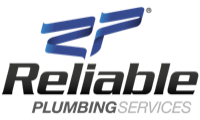If water-wasting was a competitive sport, Australia would be up there with the best. Few nations come close to us in pouring precious resources down the drain, and in Victoria, we’re no slouches either.
Every year, agricultural businesses in Victoria use more than 1,500 trillion litres of water for irrigation – almost one-quarter of all irrigation water in Australia. If this sounds like a lot, consider that up to 30 per cent is wasted before it reaches the farm gate …
It gets worse – another 20 per cent can be lost in local distribution and a further 15 per cent from overwatering. The verdict? “Could do better” … MUCH BETTER.
Overuse of Water
Although it’s increasingly supported by technology, agriculture still isn’t an exact science. Irrigation, a vital part of commercial agriculture and large-scale landscaping, is no different.
Here are just some of the ways in which poor water management results in waste:
• Overwatering
• Irregular scheduling
• Manually controlled watering
• Sub-optimal planting and zoning
• Failure to allow for changing climatic conditions
• Leakage from poorly maintained reticulation
• Inefficient delivery-system design
• Incorrect choice of delivery techniques
None of these has an impact that is completely independent of the others; an integrated water-management plan is the key to striking the right balance. Although not unique to irrigation, proven water-saving techniques – including rainwater harvesting and water reuse – allow you to reduce your intake from the mains supply.
Beyond these, look closely at every aspect of your own operation – because …
Water Wastage Starts Early
In engineering, perceived wisdom is that product cost is built in at an early stage – during the design process. With water as its raw material, irrigation is no different; poor decisions when designing your planting layout, your reticulation and your delivery system will eventually result in overuse of water.
Your first step should be to prepare an Irrigation and Water Management Plan for your entire operation. There’s no point in focusing heavily on one area and optimising it in isolation if you leave every other aspect of your site in an inefficient muddle.
Today’s software tools make it easier to include all the factors that influence water requirements and usage in a given environment. A professional commercial plumber will assist you in modelling your operation, taking account of factors that include:
• Categorisation of water usage
• Assessment of water volumes
• Desired irrigation schedule(s) for each area
• Reticulation design and technology
• Site-wide soil analysis
• On-site water storage
• Delivery-system design and technology
• Identification and assessment of water losses
Planting and Hydrozoning
As commercial plumbers, we learn a lot from agriculture professionals. One aspect of large-scale horticulture that hugely affects water usage is evaporation. The amount of water lost to evaporation is dependent – although not exclusively – on the nature of the landscape (“landscape coefficient”) and the species of plant (“species factor”).
The plant species, or more specifically the root structure, also influences the required irrigation depth. Finding the correct balance is a juggling act, but zoning plants that have similar irrigation needs (“hydrozoning”) means that the delivery system can be designed optimally. If it also makes for great growing, then everyone can be happy.
Agronomists from Melbourne University conducted extensive research at the Royal Botanic Gardens in order to optimise water usage by adopting a highly scientific approach. They found that effective hydrozoning and seasonal adjustment allowed improved irrigation scheduling, reducing water usage without any adverse impact on soil moisture levels in the critical root zone.
Something for you green-fingered guys to consider?
Reticulation and Distribution
Designing a water-efficient reticulation system requires careful planning. Your Water Management Plan should take account of the nature of local water sources and the volumes available from each, set against the amount of water you need to deliver. The pressure available from the supply and the head needed for delivery also play a major part in specification.
Correct siting for local storage tanks plays an important part in reducing water loss. Minimising the overall length of pipe by locating your tank(s) centrally means less opportunity for leaks to develop; it also allows you to adopt a uniform pipe specification, reducing the possibility of pressure imbalance at the point of use and thus avoiding under- or overwatering.
Regular maintenance of your reticulation system is an essential water-saving activity. You should budget for the system to deteriorate with age, and if you don’t repair and replace when necessary, expect to lose increasing quantities of water from leaking and damaged pipework as the years pass. Reviewing the effectiveness of your water distribution on an annual basis also leads you to consider technology upgrades as these become economically viable.
Delivery to Point-of-Use
In the past 10 years, agricultural irrigation in Australia has seen a substantial shift away from traditional surface-based flood methods towards more sophisticated drip, trickle (both surface-based and subsurface) and sprinkler technology. Choosing the right method for your plants is critical, and deciding when and for how long to use them is the key to water-efficient irrigation.
Avoid mixing delivery systems on closely connected “arms” of your irrigation system. Assuming your planting is effectively zoned, use the same type (and, where possible, manufacturer) of nozzle, drip-feed tubing or sprinkler to ensure uniform distribution. Even small variations in the size or geometry of outlet can make a real difference.
Make best use of technology (click here to read more about it) to control the irrigation schedule. Today’s SMART controllers monitor the weather, the recent rainfall, soil moisture content, water volumes delivered and a whole load more. They adjust the duration and timing of each watering session accordingly and will skip a scheduled event entirely if watering isn’t needed.
Point-of-use changes have a significant effect on water usage, with overwatering being the main culprit. Using technology effectively keeps you on top of this. It should go without saying, but avoid manual watering at all costs – it’s one of the most inefficient methods of irrigation around.
How Do You Stay on Top of Your Irrigation Problems? We’ll Help …
At Reliable Plumbing, we’ve designed and installed many commercial irrigation systems, and we can help you plan and specify one that’s right for your needs. Remember, we’re only a phone call away. If you need further information or advice, call us on 1300 78 20 40 any time. We’re there to help.








